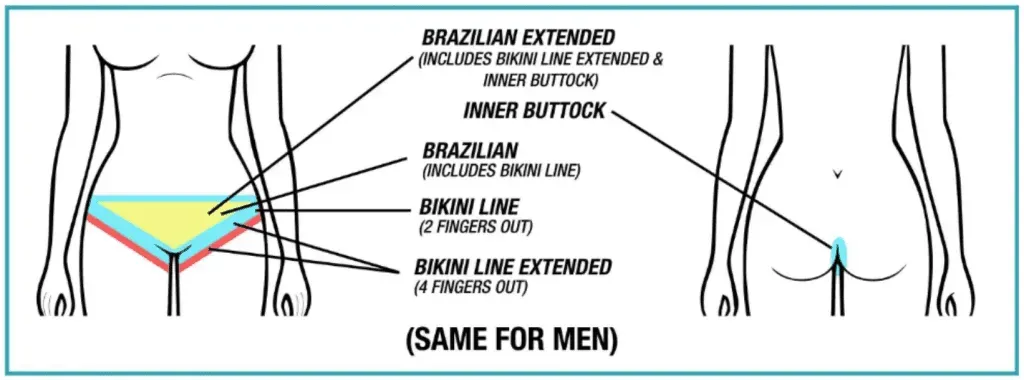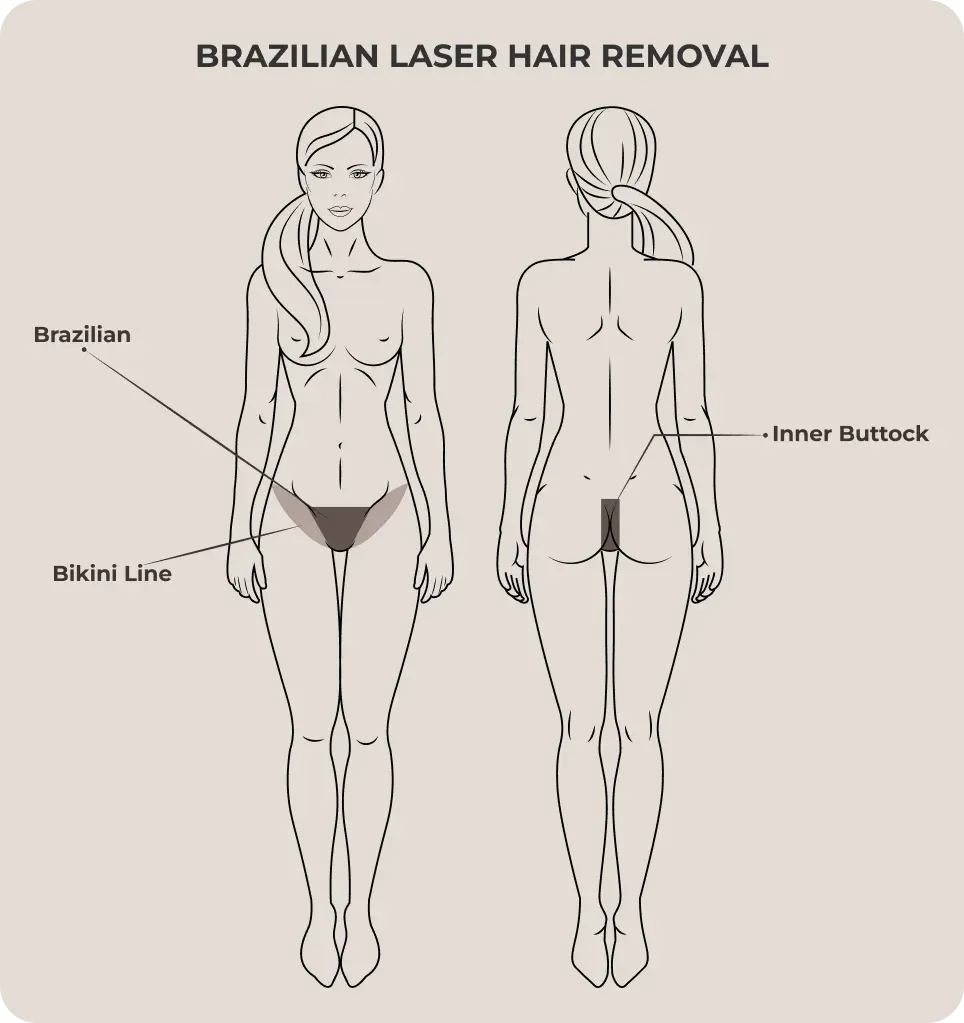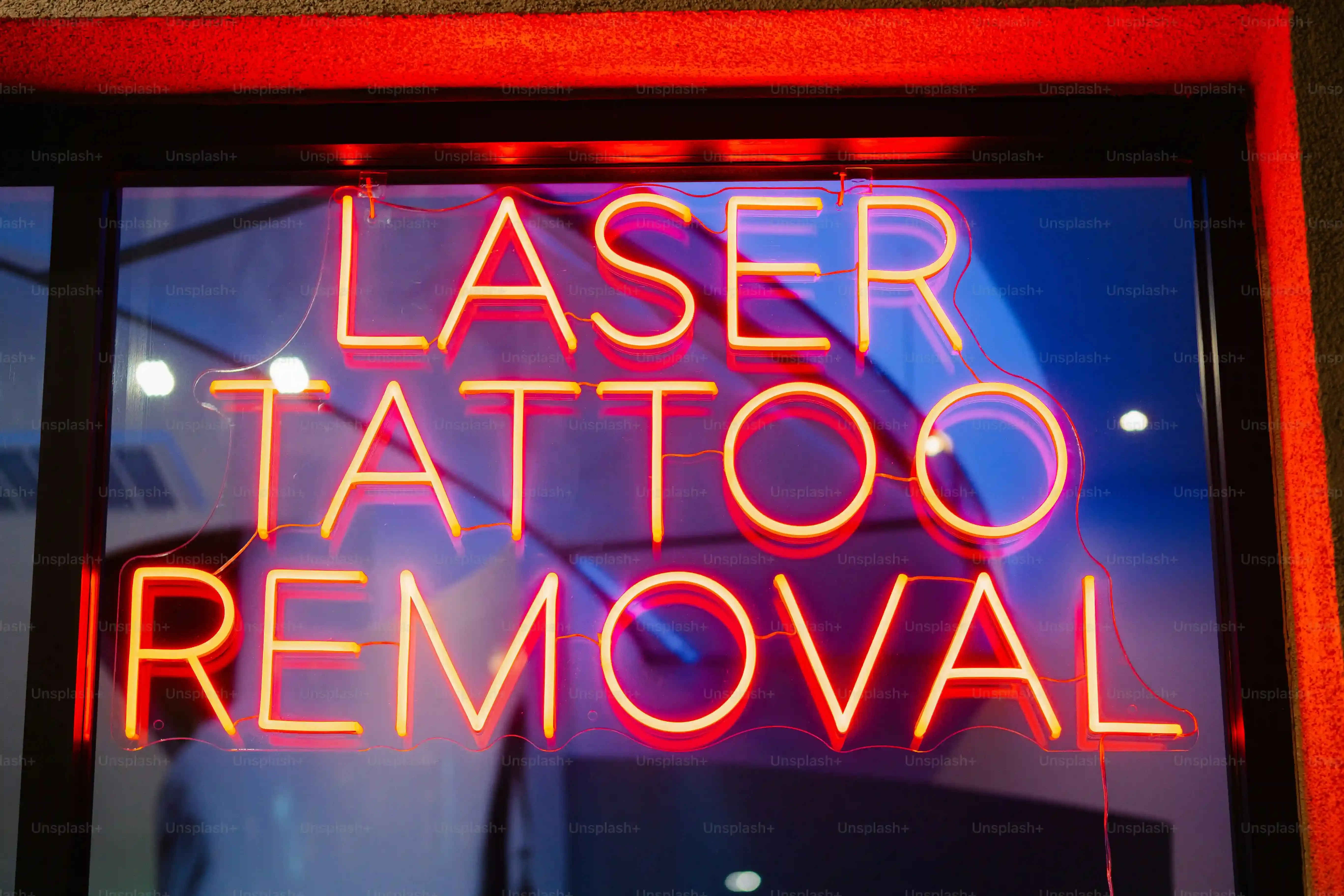Table of Contents
Getting smooth skin with laser hair removal sounds great, right? But when you start looking into it, things like "small area," "medium area," and "large area" pop up, and suddenly you're wondering where your desired treatment fits in. You might be specifically considering a Brazilian and asking yourself, is brazilian laser hair removal considered a large area? It's a common question, and frankly, navigating the various classifications clinics use can feel a bit like trying to decipher a secret code. Understanding how clinics categorize treatment zones is crucial because it directly impacts pricing, treatment time, and even the number of sessions you might need. This article will cut through the confusion, explain what a Brazilian laser hair removal typically involves, clarify how area sizes are generally defined in the laser hair removal world, and give you a clear answer on whether this popular service falls under the "large area" umbrella. We'll also touch on why this classification matters for your treatment plan and what to expect.
What Exactly is Brazilian Laser Hair Removal?

What Exactly is Brazilian Laser Hair Removal?
Defining the Brazilian Zone
Alright, let's cut to the chase. When someone talks about Brazilian laser hair removal, they're talking about zapping away hair from pretty much the entire pubic region. Think everything from the front, around the labia (for women), and yes, even the perianal area. It's designed to leave you completely smooth down there, or at least significantly reduce the hair growth so it's barely noticeable.
Unlike a standard bikini line treatment, which just targets the hair that would peek out from a swimsuit, the Brazilian goes all in. It's a popular choice for people who want a more permanent solution than waxing or shaving for this particular zone. It’s not about just tidying up; it’s about clearing the deck.
What Areas Does It Typically Cover?
So, what exactly is Brazilian laser hair removal in terms of geography? It’s the full package for the pubic area. This typically includes the mons pubis (that's the front part above the pubic bone), the labia majora, and the perianal area. Some clinics might offer slight variations, like leaving a small strip or triangle on the mons, often called a "modified Brazilian" or sometimes just a "bikini full," but the classic Brazilian aims for total hair removal in these areas.
The goal is comprehensive coverage of the hair-bearing skin in that specific region. It’s a targeted approach to a defined anatomical zone. It's not just a random patch; it's a specific, understood area of the body that clients request by name.
- Classic Brazilian: Full removal from front, labia, and perianal area.
- Modified Brazilian/Bikini Full: Leaves a small shape (strip, triangle) on the front, removes hair elsewhere.
- Standard Bikini: Removes hair outside the typical panty line.
The Goal: Smooth, Hair-Free Results
The primary objective of opting for Brazilian laser hair removal is to achieve long-term hair reduction and smoother skin in the pubic area. Laser works by targeting the pigment (melanin) in the hair follicle. The laser energy turns into heat, damaging the follicle and inhibiting future hair growth. After a series of sessions, the hair that does grow back is usually much finer, lighter, and sparser.
Beyond just getting rid of hair, many people choose this treatment to combat annoying issues like ingrown hairs, razor burn, and the general hassle of frequent shaving or painful waxing. It’s about convenience and comfort, aiming for a state where you don't have to think about hair removal in that area constantly.
Breaking Down Laser Hair Removal Area Classifications
Why Clinics Size Things Up
so you're looking at the price list for laser hair removal, and you see these different size categories: small, medium, large, maybe even extra-large. Why do clinics do this? It's not just to make things complicated, though it can feel that way sometimes. The main reason is simple: different body areas take different amounts of time and laser energy to treat. Treating a small spot like your upper lip is a quick zap, maybe five minutes. Zapping a whole back? That's a much longer session, requires more pulses from the laser machine, and frankly, ties up the technician and the equipment for a significant chunk of time.
So, clinics use these classifications to standardize pricing and scheduling. It helps them manage appointments efficiently and ensures they're charging fairly for the resources used during your treatment. Think of it like buying fabric – you pay by the yard because a bigger piece costs more and takes more material. Laser hair removal is similar; the "area" is the measure that determines the cost and time investment for both you and the clinic.
Typical Area Categories Explained
While there isn't one single, universal standard that every clinic follows worldwide (annoying, I know), there are some general guidelines for these laser hair removal area classifications. Small areas are usually quick, tiny spots. We're talking upper lip, chin, maybe fingers or toes, nipples. Medium areas step it up a bit; think underarms, standard bikini line, maybe half an arm or half a leg, or the neck. Large areas are where you start getting into bigger real estate like full arms, full legs, a full back, or the chest and abdomen.
Extra-large areas are often combinations or very dense, large zones, like a full body package or a full back extension. The exact definition can vary slightly from place to place, so it's always smart to check the specific clinic's size chart. But this gives you a general idea of how they carve up the body for treatment purposes.
Area Category | Typical Examples | Treatment Time (Approx.) |
|---|---|---|
Small | Upper Lip, Chin, Fingers, Toes, Nipples | 5-10 minutes |
Medium | Underarms, Standard Bikini, Neck, Half Arm | 15-25 minutes |
Large | Full Arms, Full Legs, Full Back, Chest & Abdomen | 30-60+ minutes |
So, Is Brazilian Laser Hair Removal Considered a Large Area?

So, Is Brazilian Laser Hair Removal Considered a Large Area?
Alright, the million-dollar question: is brazilian laser hair removal considered a large area? Generally speaking, yes, most clinics classify a Brazilian as a large area for laser hair removal. While it might not cover as much sheer surface area as, say, a full back or full legs, the definition of "large" in this context isn't purely about square inches. It's also about the complexity of the area, the sensitivity of the skin, and the time required to treat it thoroughly and safely. The pubic region involves contours and different angles that require careful attention, making the treatment session longer and more intricate than zapping a flat surface like an arm. So, while you might think of "large" as just size, clinics factor in the nuances of the treatment zone when making these classifications.
The Impact of Area Size on Your Brazilian Laser Hair Removal

The Impact of Area Size on Your Brazilian Laser Hair Removal
Area Size and Your Wallet
let's talk money. The most obvious impact of whether is brazilian laser hair removal considered a large area is the price tag. Clinics base their pricing structures heavily on the size of the treatment zone. A large area, like a Brazilian, is going to cost significantly more per session than a small area like the upper lip or a medium area like the underarms.
This isn't just arbitrary. As we discussed, larger areas require more pulses from the laser machine, take up more of the technician's time, and tie up the treatment room for a longer period. It’s a simple cost-of-doing-business equation for the clinic, which gets passed on to you. So, knowing that a Brazilian is typically classified as a large area helps you budget accordingly and avoid sticker shock when you get the price list.
Treatment Time and Session Count
Beyond the cost per session, the area size also dictates how long you'll be in the treatment chair and, potentially, the total number of sessions you might need. Since a Brazilian covers a substantial and contoured region, a single treatment session will take longer than, say, zapping your underarms. You could be looking at anywhere from 20 to 45 minutes or even more per session, depending on the specific clinic's protocols and the density of your hair.
While the total number of sessions required for significant reduction (typically 6-8) is relatively standard across most areas, the complexity and size of a large area like the Brazilian mean that each session is a bigger time commitment. You can't just pop in and out in five minutes like you might for a small spot.
- Factors Influencing Brazilian Laser Treatment:
- Hair color and thickness (darker, thicker hair responds better)
- Skin type (determines laser settings)
- Hormonal factors (can influence regrowth)
- Consistency of treatment schedule
- Clinic's specific laser technology
Managing Expectations and Planning Ahead
Knowing that is brazilian laser hair removal considered a large area is crucial for setting realistic expectations and planning your treatment journey. It means understanding that this isn't a cheap, quick fix. It's an investment in time and money, spread out over several months as you complete the recommended course of sessions.
It also helps you compare pricing accurately when shopping around. Don't just look at the per-session price; consider package deals often offered for larger areas, which can make the overall cost more manageable. Websites like hairawaybylaser.com often provide clear breakdowns of areas and pricing, which is super helpful when you're trying to figure out your budget and timeline for a treatment classified as a large area like the Brazilian.
Wrapping Up: Is Brazilian a Large Area?
So, after breaking down what Brazilian laser hair removal entails and how clinics typically classify treatment zones, the answer to whether is brazilian laser hair removal considered a large area generally leans towards yes. While classifications can vary slightly from one provider to the next, the comprehensive nature of a Brazilian treatment, covering the entire pubic region, often places it in the "large" category. This isn't just semantics; it influences the session duration, the number of pulses required, and ultimately, the cost. Understanding this helps manage expectations and allows for more informed decisions when planning your treatment. Always confirm your clinic's specific size definitions during your consultation to ensure you know exactly what you're signing up for.
